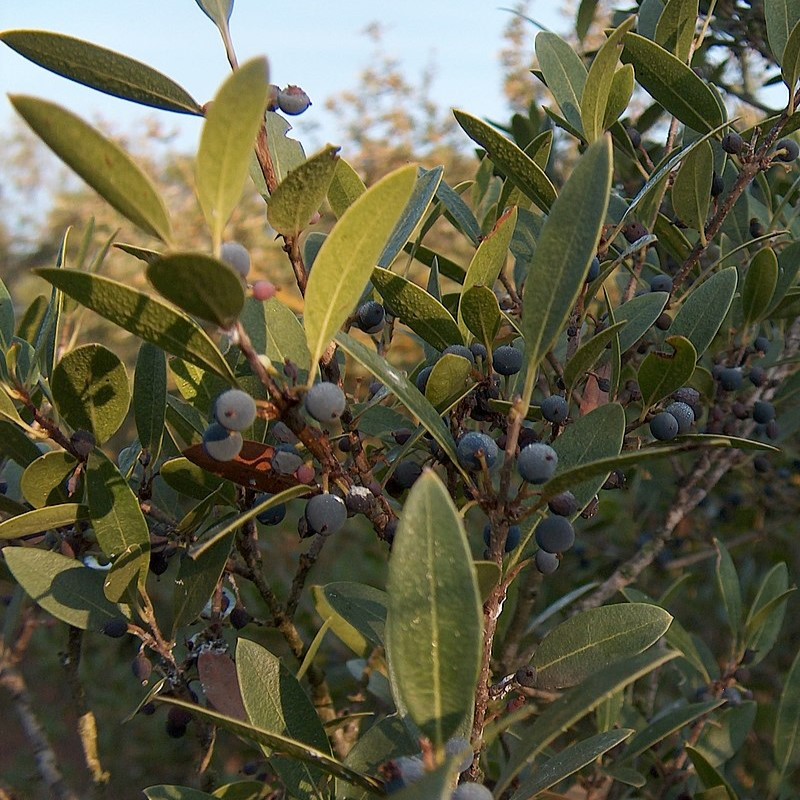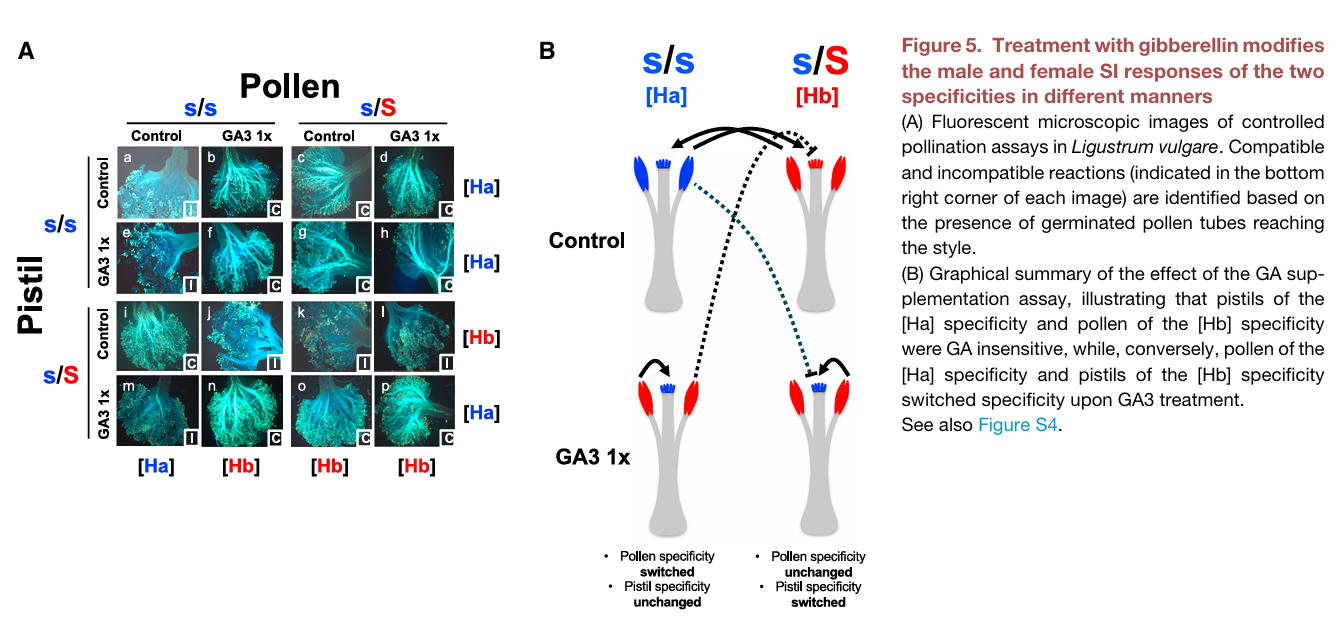Phillyrea angustifolia
Overview
| Genus | Phillyrea |
| Species | angustifolia |
| Common Name | Narrow-leaved mock-privet |
| Abbreviation | P. angustifolia |
| Ploidy | Diploid |
| Chromosome Number | 2n = 46 |
| Genome Size | 800 Mb |
| Genome Assemblies | 1 |
| Cross Reference | NCBI taxon: 96521 |
Organism Image

Description
Phillyrea angustifolia, the narrow-leaved mock privet, is a species of flowering plant in the olive family Oleaceae, native to the western and central Mediterranean. It is an evergreen shrub with simple, entire, leathery, dark green, oppositely arranged leaves. Scented creamy-white flowers are borne at the leaf axils in spring and summer, and are followed by purplish black berries. The genus name Phillyrea is derived from Greek and means 'leafy', while the species' epithet angustifolia means 'narrow-leaved'.
Whole Genomes
Whole Genome Sequences & Annotations for Phillyrea angustifolia
S genes
In flowering plants, outcrossing is commonly ensured by self-incompatibility (SI) systems. These can be homomorphic (typically with many different allelic specificities) or can accompany flower heteromorphism (mostly with just two specificities and corresponding floral types). The SI system of the Oleaceae family is unusual, with the long-term maintenance of only two specificities but often without flower morphology differences. To elucidate the genomic architecture and molecular basis of this SI system, we obtained chromosome-scale genome assemblies of Phillyrea angustifolia individuals and related them to a genetic map. The S-locus region proved to have a segregating 543-kb indel unique to one specificity, suggesting a hemizygous region, as observed in all distylous systems so far studied at the genomic level. Only one of the predicted genes in this indel region is found in the olive tree, Olea europaea, genome, also within a segregating indel. We describe complete association between the presence/absence of this gene and the SI types determined for individuals of seven distantly related Oleaceae species. This gene is predicted to be involved in catabolism of the gibberellic acid (GA) hormone, and experimental manipulation of GA levels in developing buds modified the male and female SI responses of the two specificities in different ways. Our results provide a unique example of a homomorphic SI system, where a single conserved gibberellin-related gene in a hemizygous indel underlies the long-term maintenance of two groups of reproductive compatibility.

Downloads
The Phillyrea S gene sequences are available in FASTA format.
| CDS and Protein (FASTA file) | S-gene_Phillyrea |
Publications
Castric V, Batista RA, Carré A, Mousavi S, Mazoyer C, Godé C, Gallina S, Ponitzki C, Theron A, Bellec A, Marande W, Santoni S, Mariotti R, Rubini A, Legrand S, Billiard S, Vekemans X, Vernet P, Saumitou-Laprade P. The homomorphic self-incompatibility system in Oleaceae is controlled by a hemizygous genomic region expressing a gibberellin pathway gene. Curr Biol. 2024 May 6;34(9):1967-1976.e6. doi: 10.1016/j.cub.2024.03.047.